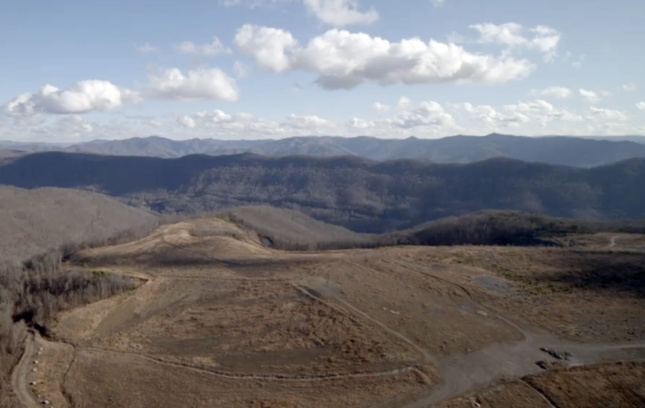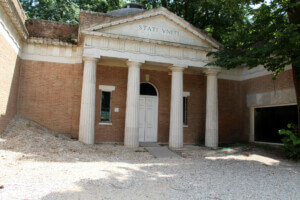How can the sites of former coal mines, those strange landscapes scarred by decades of digging and desecration, serve the public in a post-industrial America? That was the question posed to the students of The Somewhere Project, a design studio at the University of Kentucky, College of Design, as they considered how to transform a prototypical mine site in the Appalachian Basin in Kentucky into a contemporary arts institution.
Led by Brent Sturlaugson, Jeffrey Johnson, and cofounders of Only If Adam Frampton and Karolina Czeczek, The Somewhere Studio brief was formed through a partnership with Somewhere Appalachia, an initiative established by Brook Smith that is currently seeking to transform a former Kentucky coal mine with an arts destination. The goals of the ambitious project include providing new jobs, educational opportunities, and new local business to the Appalachian community while advocating for the region’s natural beauty and protecting its natural habitats. “I have a long history with the region and a deep respect for its great people,” said Smith in a statement. “I see transformative initiatives like Somewhere Appalachia as a responsibility—a must—from dialogue and planning to reality.”
Students were also asked to design a space for Cripplewood (Kreupelhout) (2012-2013), a 59-foot sculpture of a fallen tree created by the artist Berlinde de Bruyckere that the artist first exhibited at the 2013 Venice Biennale and has since agreed to permanent display within a coal mining site through Somewhere Appalachia. Like the injured mining landscape that would surround it, Cripplewood bears the scars of an apparently troubled past. “For it to find its final and permanent resting place in the Appalachian Mountains, a landscape that was wounded by intensive mining, healing slowly over time, and now injected by this act of kindness, of hope, renewal and restoration is just perfect,” the artist wrote in a statement.

“Through research and case studies of relevant cultural projects and institutions, private art collections in rural communities, industrial heritage tourism, and mining remediations,” the studio prompt reads, “the studio will establish a program for the contemporary arts institution which may include a visitor center, exhibition space, pavilions and/or galleries, performance spaces, production spaces, a restaurant or cafe, community, educational and seminar rooms, spaces for artists in residence, a hotel, and other programs yet to be identified.”
The final projects for the studio will be presented on May 1, after which they will be exhibited during the 2020 Venice Architecture Biennale. The charette on March 22 and 23 of this year, which was supposed to bring students from the University of Kentucky to New York City, was instead held digitally after the spread of novel coronavirus caused a number of similar event cancelations.











